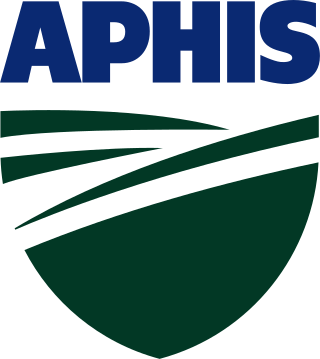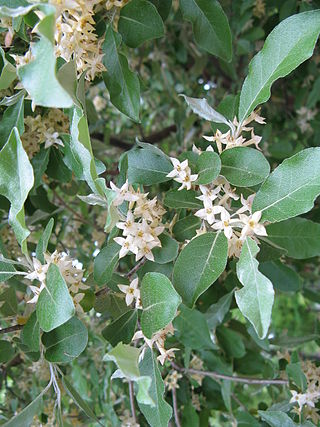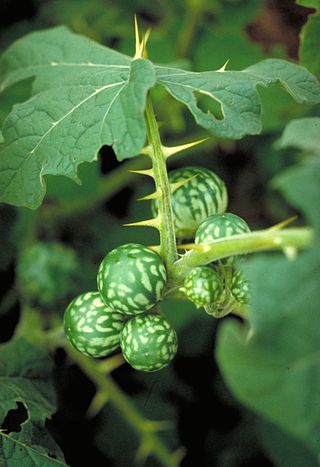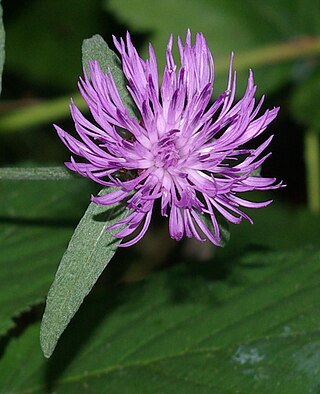
The Federal Meat Inspection Act of 1906 (FMIA) is an American law that makes it illegal to adulterate or misbrand meat and meat products being sold as food, and ensures that meat and meat products are slaughtered and processed under strictly regulated sanitary conditions. These requirements also apply to imported meat products, which must be inspected under equivalent foreign standards. United States Department of Agriculture (USDA) inspection of poultry was added by the Poultry Products Inspection Act of 1957 (PPIA). The Food, Drug, and Cosmetic Act authorizes the Food and Drug Administration (FDA) to provide inspection services for all livestock and poultry species not listed in the FMIA or PPIA, including venison and buffalo. The Agricultural Marketing Act authorizes the USDA to offer voluntary, fee-for-service inspection services for these same species.

The Pure Food and Drug Act of 1906, also known as Dr. Wiley's Law, was the first of a series of significant consumer protection laws which was enacted by Congress in the 20th century and led to the creation of the Food and Drug Administration. Its main purpose was to ban foreign and interstate traffic in adulterated or mislabeled food and drug products, and it directed the U.S. Bureau of Chemistry to inspect products and refer offenders to prosecutors. It required that active ingredients be placed on the label of a drug's packaging and that drugs could not fall below purity levels established by the United States Pharmacopeia or the National Formulary.

The Animal and Plant Health Inspection Service (APHIS) is an agency of the United States Department of Agriculture (USDA) based in Riverdale, Maryland responsible for protecting animal health, animal welfare, and plant health. APHIS is the lead agency for collaboration with other agencies to protect U.S. agriculture from invasive pests and diseases. APHIS's PPQ is the National Plant Protection Organization for the U.S., and the agency's head of veterinary services/veterinary Deputy Administrator is the Chief Veterinary Officer of the United States.

Elaeagnus umbellata is known as Japanese silverberry, umbellata oleaster, autumn olive, autumn elaeagnus, spreading oleaster, autumnberry, or autumn berry. The species is indigenous to eastern Asia and ranges from the Himalayas eastwards to Japan. It is a hardy, aggressive invasive species able to readily colonize barren land, becoming a troublesome plant in the central and northeastern United States and Europe.

Solanum viarum, the tropical soda apple, is a perennial shrub native to Brazil and Argentina with a prickly stem and prickly leaves. The fruit is golf-ball-sized with the coloration of a watermelon. It is considered an invasive species in the lower eastern coastal states of the United States and recently on the Mid North Coast of Australia.

Hypochaeris radicata – also known as catsear, flatweed, cat's-ear, hairy cat's ear, or false dandelion – is a perennial, low-lying edible herb often found in lawns. The plant is native to Europe, but has also been introduced to the Americas, Japan, Australia, and New Zealand, where it can be an invasive weed. It is listed as a noxious weed in the northwestern U.S. state of Washington.

Cirsium arvense is a perennial species of flowering plant in the family Asteraceae, native throughout Europe and western Asia, northern Africa and widely introduced elsewhere. The standard English name in its native area is creeping thistle. It is also commonly known as Canada thistle and field thistle.

Crotalaria longirostrata, the chipilín, is a perennial legume that is native to Mexico and Central America. Other common names include chepil, chepilin, chipilin and longbeak rattlebox.

Johnson grass or Johnsongrass, Sorghum halepense, is a plant in the grass family, Poaceae, native to Asia and northern Africa. The plant has been introduced to all continents except Antarctica, and most larger islands and archipelagos. It reproduces by rhizomes and seeds.

Crupina vulgaris is a species of flowering plant in the family Asteraceae. Its common names include common crupina, bearded-creeper, false saw-wort, and starry scabious. It is native to parts of Europe, Asia, and North Africa, and it is known elsewhere as an introduced species and often a noxious weed.

Berteroa incana is a species of flowering plant in the mustard family, Brassicaceae. Its common names include hoary alyssum, false hoary madwort, hoary berteroa, and hoary alison. It is a biennial herb native to Eurasia and it has been introduced to western Europe and North America. It is listed as an invasive noxious weed in some areas of United States and Canada
President Chester A. Arthur signed the Animal Industry Act on May 29, 1884 creating the Bureau of Animal Industry (BAI), an organization that was established under the United States Department of Agriculture. It replaced the Veterinary Division that had been created by the Commissioner of Agriculture in 1883, which had taken over for the Treasury Cattle Commission, Department of Treasury.
The Virus-Serum-Toxin Act or VSTA was United States Federal legislation designed to protect farmers and livestock raisers by regulating the quality of vaccines and point-of-care diagnostics for animals. Initially, the Virus-Serum-Toxin Act was created due to significant losses from unregulated manufacture and distribution of anti-hog cholera serum. The Act's intended purpose is to ensure the safe and efficient supply of animal vaccines and other biological products. The United States Secretary of Agriculture is responsible for licensing and regulating the manufacture, importation, and exportation of affected agents. The act and its applicable guidelines are managed by the Animal and Plant Health Inspection Service (APHIS) of the United States Department of Agriculture (USDA).

The Plant Protection Act (PPA) is a US statute relating to plant pests and noxious weeds introduced in 2000. It is currently codified at 7 U.S.C. 7701 et seq. It consolidates related responsibilities that were previously spread over various legislative statutes, including the Plant Quarantine Act, the Federal Plant Pest Act and the Federal Noxious Weed Act of 1974.

The Food Safety and Inspection Service (FSIS), an agency of the United States Department of Agriculture (USDA), is the public health regulatory agency responsible for ensuring that United States' commercial supply of meat, poultry, and egg products is safe, wholesome, and correctly labeled and packaged. The FSIS draws its authority from the Federal Meat Inspection Act of 1906, the Poultry Products Inspection Act of 1957 and the Egg Products Inspection Act of 1970. The FSIS also acts as a national health department and is responsible for the safety of public food-related establishments as well as business investigation.

Plant Disease is a peer-reviewed scientific journal of plant pathology focusing on new diseases, epidemics, and methods of disease control. It is a continuation of The Plant Disease Bulletin (1917–1922) and The Plant Disease Reporter (1923–1979), both publications of the US Department of Agriculture. It is currently published by the American Phytopathological Society and edited by Mary Burrows.
Farmers' Bulletin was published by the United States Department of Agriculture with the first issue appearing in June 1889. The farm bulletins could be obtained upon the written request to a Member of Congress or to the United States Secretary of Agriculture. The agricultural circular would be sent complimentary to any address within the United States. The agricultural publication covered an extensive range of rural topics as related to agricultural science, agronomy, plant diseases, rural living, soil conservation, and sustainable agriculture.

Agricultural Experiment Stations Act of 1887 is a United States federal statute establishing agricultural research by the governance of the United States land-grant colleges as enacted by the Land-Grant Agricultural and Mechanical College Act of 1862. The agricultural experiment station alliance was granted fiscal appropriations by the enactment of the Hatch Act of 1887. The Act of Congress defines the basis of the agricultural experiments and scientific research by the State or Territory educational institutions.
Idaho Department of Agriculture is a state-level government agency of Idaho, responsible for managing agricultural services and policy. The department tasked with regulating food safety standards, licensing, the Invasive Species Program, and animal industries. The department was founded in 1919. It frequently collaborates with the United States Department of Agriculture and Bureau of Land Management.

Meadow knapweed, also known as hybrid knapweed or protean knapweed, is a fertile hybrid between black knapweed and brown knapweed. The taxonomic status of the species is uncertain, and meadow knapweed has been variously described as different species.













